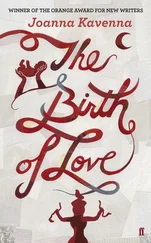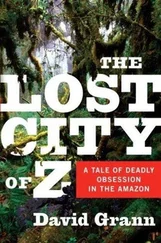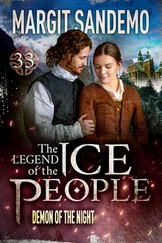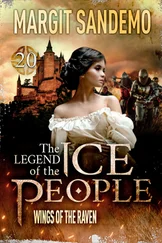The revolution fell into acrimony and desperation; after a few months in power Eisner was assassinated by Count Anton von Arco-Valley, a disaffected aristocrat. Eisner had been preparing to offer his resignation; his party had recently suffered a decisive defeat. Arco-Valley had previously tried to enlist in the Thule Society, though they had turned him down because he was partly Jewish. There were rumours that he had assassinated Eisner to convince the Thule Society members of his commitment to their cause.
Watching from the sidelines, terrified and militant, were the members of the Thule Society. They were a coterie of pseudo-academics, feigning a scholarly interest in the Sagas, secretly agitating against the Communists, the ‘foreign elements’ they thought were controlling the city, the international conspiracy of Capital, by which they meant Judaism, the enemies they feared were taking over Germany. Their leader was a faux-aristocrat called Rudolf von Sebottendorff, a man with a long nose, an indeterminate neck, small eyes like shallow indentations on his flesh. Sebottendorff’s father had been a train driver with the surname Glauer, but Sebottendorff travelled widely in his early years, and claimed to have been adopted in Turkey by an expatriate, Baron Heinrich von Sebottendorff. Acquiring an aristocratic “von” was a tactic practised by the Ariosophists Guido von List and Lanz von Liebenfels, bourgeois Austrians both, with nothing noble about their lineage, who concocted a racist variety of spiritualism in the early years of the twentieth century. Sebottendorff managed to acquire tenuous aristocratic relatives, and with this new status he took to wandering around the Middle East, looking for patrons, reading about occultism and crafting chaotic theories about threats to the integrity of the Aryan peoples.
The Thule Society had previously been a local branch of the Germanenorden, a society obsessed with what it thought was ancient Germanic heritage, its members wringing their hands about the dilution of the German ‘spirit’ through the addition of non-‘Aryan’ elements to the population. Sebottendorff was an eager member of this group, having been lured by an appeal for ‘Aryan’ recruits, but when revolutionary elements gained control of the city Sebottendorff wanted a more mysterious title for the branch. He chose Thule, and claimed his group was dedicated to the study of the Sagas. The name Thule was innocuous enough on the surface, said Sebottendorff, but to those who ‘knew’ it gave a clear impression of the hidden agenda of the society. A clear impression because the old myths of the north appealed to extremist nationalists at the time, groups of Germans and Austrians in love with the heroes of the Sagas, leafing through tales of Viking violence. The Thule Society could have been what it claimed to be—a few scholastic Bavarians sitting around talking about the Sagas, a German version of the Viking societies in London. But the interests of Thule Society members went beyond the Sagas; their fantasy was a Germany stripped of all those elements they regarded as ‘alien.’ Only Germans ‘of homogeneous blood through generations’ were allowed to join the Thule Society.
The Thule Society set itself against the atheism of Communism and the materialism of modernity, claiming allegiance to an ancient spiritual force, the ancient heritage of the Germanic race. The society mixed reactionary mysticism with political agitation, and the ‘Thule Leute ’ (Thule People), as Sebottendorff liked to call them, played a role in the militant anti-Communist activities in Munich, in the activities of the Freikorps, a militia organization. Alfred Rosenberg, who went on to become Hitler’s propaganda expert, spent the early 1920s editing the Völkischer Beobachter , the Thule Society’s newspaper. In a gloomy gothic typeface bleeding across the page they flaunted their anti-Semitism, goading the city to a fight—‘Only buy in German shops!’ they cried—their anti-Semitism inseparable from their anti-Communism: ‘Against the Republic! ’ The Communists were Jews; Eisner’s movement was an attempt by foreign Bolshevism to take over Bavaria, claimed the Völkischer Beobachter , fervently.
In a long line of dreams about Thule, those of Sebottendorff and his fellow ‘Thule People’ were the most savage. Sebottendorff had read old Zoroastrian texts describing a lost Aryan homeland, Airyana Vaejah , which some thought had been in Siberia. Thule, Sebottendorff thought, was the place where the Aryans had originally lived. He imagined Thule as somewhere hardly unheimlich at all, far from uncanny and strange. It was, he thought, an ‘Aryan’ Heimat , homeland. He took the Thule of the classical poets, the philosophers and the fantasists, and used its ambiguity for his own purposes, as a code word between like-minded extremists. Thule was just one of many symbols and ideas they used; the Thule Society members were fascinated by alchemical and eastern symbols: rising suns, daggers and swastikas.
By early July I was in Munich, a significant change of scene, from the shattered rocks and purple plains of Iceland to the tranquil forests of Bavaria. The sun was beginning to fade when I arrived, drifting towards the turrets and towers of the city. I took a tram from the main station, which rattled through the streets, past the concrete of Karlsplatz in the city centre. Stepping off at Sendlinger Tor, an entrance to the old city, I dragged my suitcase along a paved main street, past designer shops and organic cafés. On a warm day the city seemed sedate, a place of elegant buildings, painted pale colours, with the towers of churches rising out of the lower lines of housing. I walked along the slow streets, arriving at Marienplatz where the crowds ebbed across the square, fumbling with cameras and hats. The green onion domes of the Frauenkirche loomed above, one of the central sights of the reconstructed Old Town. Munich was severely bombed during World War Two and carefully rebuilt in the post-war years. Leering over the square was the neo-Gothic Neues Rathaus, its façade covered in gargoyles. There were a few people standing beneath, waiting for the clock to chime, when a pair of copper figures would appear, dancing stiffly.
Evening was falling across the city, across the patched-up buildings, across the reconstructed rows, the seams hardly showing. The streetlights were flickering into life, shining against the fine stones of the Residenz, the former palace of the regional monarchs, the Wittelsbachs. The trams whirred along the streets, past the cafés closing their doors and the shops with their shutters down. Neon lights blazed along Sonnenstrasse, pointing out the sex shops and cheap takeaway joints. Bells echoed from tall churches and faded monuments. Footfalls, the soft sounds of the locals going home, punctuated the stillness, and there were other locals forming orderly lines for the trams. The forests stretched beyond the city, green hills, clear lakes, miles of quiet countryside, under the cover of dusk.
I found my hotel, an inn near a food market in the centre, run by a beaming woman who dragged my suitcase out of my hands and thrust it into the arms of her son. ‘Take it now,’ she exclaimed. The son, a broad-shouldered teenager, lugged it willingly up the stairs. The room was decked in Bavarian kitsch: a dozen 1930s calendars framed along the walls, a range of wine bottles along the window ledge, dried flowers, wooden animals dangling from the light shades and signed photographs of faded celebrities. The effect was like a storeroom, hastily tidied for an unexpected guest. I found a place to put my suitcase and pushed open the window. Beneath, people were sitting in outdoor cafés in the market, eating portions of chips and drinking beers. The clocks chimed the hour around Marienplatz.
Читать дальше












